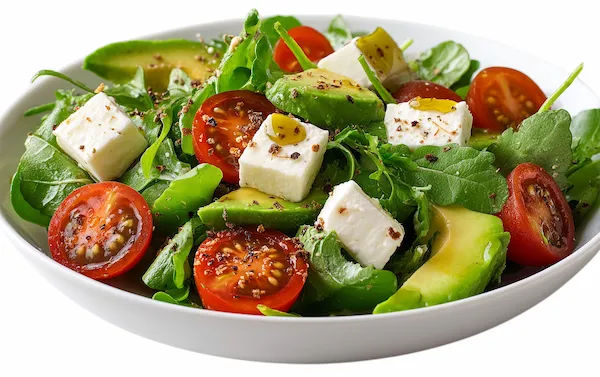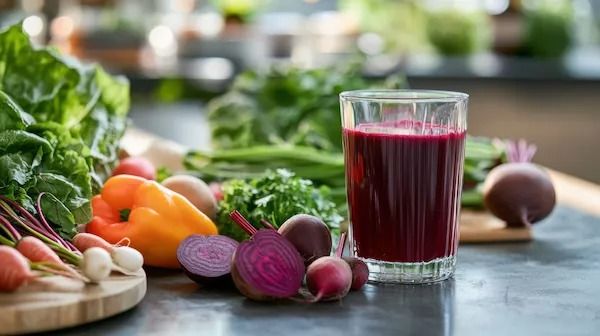Dysphagia-Friendly Food Recipes: Eating Well with Swallowing Difficulties
This article provides a comprehensive guide to dysphagia-friendly food recipes, ensuring that those with swallowing difficulties can enjoy their meals safely and comfortably.

Written by
Last updated on 3rd Jul, 2025
Introduction
Dysphagia, or difficulty swallowing, is a condition that affects millions of people worldwide. It can result from various medical conditions, including stroke, neurological disorders, and head or neck injuries. For individuals with dysphagia, eating can be a challenging and sometimes dangerous activity. However, with the right recipes and preparation techniques, it is possible to create delicious and nutritious meals that are easy to swallow.
What is Dysphagia?
Dysphagia can result from a variety of causes, including neurological conditions like stroke, Parkinson’s disease, or multiple sclerosis, as well as structural issues such as head or neck surgery, esophageal disorders, or age-related changes in swallowing ability. Dysphagia, or difficulty swallowing, can be classified into different types based on the location and nature of the swallowing problem. Here are the main types of dysphagia:
Oropharyngeal Dysphagia: Oropharyngeal dysphagia occurs when there is difficulty moving food from the mouth to the pharynx and into the esophagus. This type of dysphagia is often related to problems with the muscles and nerves that control swallowing.
Esophageal Dysphagia: Esophageal dysphagia occurs when there is difficulty moving food through the esophagus and into the stomach. This type of dysphagia is often related to structural or motility issues within the esophagus.
Functional Dysphagia: Functional dysphagia occurs when there is difficulty swallowing without any apparent structural or motility abnormalities. This type of dysphagia is often related to psychological or idiopathic factors.
People with dysphagia may experience symptoms such as coughing or choking while eating or drinking, food or liquids getting stuck in the throat, or even regurgitation. These difficulties make it necessary to adjust the consistency of food and drinks to ensure they are safe to swallow. Effectively managing dysphagia involves modifying the texture of foods, often by pureeing, blending, or thickening them, to create a smooth and uniform consistency that is easier to swallow.
Key Principles of Dysphagia-Friendly Food Recipes
When preparing meals for someone with dysphagia, there are a few important things to keep in mind to make sure the food is safe and easy to eat. These key principles can help guide your cooking:
Texture Modification: The food should be soft, smooth, and easy to swallow. This might mean pureeing, mashing, or blending foods so they don’t have any lumps or chunks that could be a choking hazard. The goal is to make the food smooth and uniform in texture.
Avoid Dry or Tough Foods: Dry, hard, or fibrous foods (like crackers, dry toast, or raw vegetables) should be avoided, as they can cause discomfort or pose a choking risk.
Moisture Content: Dry foods are much harder to swallow and can cause discomfort. Adding moisture, like sauces, gravies, or broths, can help achieve the right consistency, making the food easier to swallow.
Small, Manageable Portions: Small bites or spoonfuls of food are easier to manage and swallow. It’s also beneficial to encourage frequent, smaller meals instead of large ones.
Focus on Nutrient-Dense Foods: Ensure the meals are nutritionally balanced, as individuals with dysphagia may have a reduced appetite or difficulty consuming enough food to meet their daily nutrient needs.
Safety: Always check that the food is at a safe temperature before serving. Foods that are too hot can burn, and foods that are too cold might be harder to swallow. A comfortable temperature ensures a safer, more pleasant eating experience.
Dysphagia-Friendly Food Recipes
Here are some delicious and easy-to-prepare recipes for individuals with dysphagia that maintain flavor and nutrition while promoting safe swallowing.
1. Egg Custard
Egg custard is a smooth, nutrient-dense dessert that provides protein and calcium, making it a perfect option for people with dysphagia.
Ingredients:
2 large eggs
1 1/2 cups whole milk
1/4 cup sugar
1/2 teaspoon vanilla extract
A pinch of salt
Instructions:
Preheat your oven to 325°F (163°C). Lightly grease custard cups or ramekins.
In a bowl, whisk the eggs, milk, sugar, vanilla, and salt until smooth.
Pour the mixture into the prepared cups.
Place the cups in a baking pan and add hot water to the pan until it reaches halfway up the sides of the cups.
Bake for 40-45 minutes, or until a knife inserted into the center comes out clean.
Allow the custards to cool slightly before serving.
2. Smooth Avocado and Banana Mash
Avocados and bananas are both soft, nutrient-packed fruits that blend well into a dysphagia-friendly mash. This mash is rich in healthy fats, potassium, and fiber, providing a simple yet satisfying option for those with swallowing difficulties.
Ingredients:
1 ripe avocado
1 ripe banana
1 tablespoon lemon juice (optional, to prevent browning)
1 teaspoon honey (optional)
Instructions:
Peel and pit the avocado and banana.
Mash the avocado and banana together using a fork, or blend them in a food processor for an even smoother texture.
Add lemon juice and honey for extra flavor, if desired.
Serve immediately as a snack or a side dish.
3. Mashed Sweet Potatoes
Sweet potatoes are rich in vitamins and fiber, but they must be prepared to the right consistency for those with dysphagia. This mashed sweet potato is soft and creamy, making it easy to swallow while still providing essential nutrients.
Ingredients:
2 medium sweet potatoes
1/4 cup unsalted butter or margarine
1/4 cup milk (or more, depending on desired consistency)
1 teaspoon ground cinnamon (optional)
Salt and pepper to taste
Instructions:
Peel and cube the sweet potatoes.
Boil them in water for 15-20 minutes, or until they are tender and easily pierced with a fork.
Drain the potatoes and place them in a bowl.
Mash them with a potato masher or use a blender for a smoother texture.
Add butter and milk, mixing until you achieve a smooth, creamy consistency. If needed, add more milk to reach a texture that is easy to swallow.
Season with cinnamon, salt, and pepper to taste.
4. Chicken and Vegetable Puree
This pureed chicken and vegetable soup is rich in protein, vitamins, and minerals while being soft enough for individuals with dysphagia to safely enjoy.
Ingredients:
2 boneless, skinless chicken breasts
1 medium carrot, peeled and chopped
1 medium potato, peeled and chopped
1/2 cup peas (frozen or fresh)
4 cups low-sodium chicken broth
1/4 cup heavy cream (optional for added richness)
Salt and pepper to taste
Instructions:
In a large pot, combine the chicken breasts, carrot, potato, peas, and chicken broth.
Bring to a boil, then reduce the heat and simmer for about 25-30 minutes, or until the vegetables are tender and the chicken is fully cooked.
Remove the chicken breasts and shred or chop them into small, fine pieces.
Blend the soup using an immersion blender or regular blender until smooth. Add heavy cream for extra creaminess, if desired.
Return the chicken to the soup and blend again until the entire mixture is smooth and easy to swallow.
Season with salt and pepper.
5. Apple Cinnamon Oatmeal
This warm and comforting oatmeal is perfect for a dysphagia-friendly breakfast. It's soft, smooth, and packed with flavor!
Ingredients:
1 cup rolled oats
2 cups water or milk (or a dairy-free alternative)
1 apple, peeled and chopped
1 teaspoon cinnamon
1 tablespoon honey (optional)
Instructions:
In a pot, combine the oats, water or milk, chopped apple, and cinnamon.
Bring the mixture to a boil, then reduce the heat and let it simmer until the oats are soft and the mixture has thickened.
Use an immersion blender to puree the oatmeal until smooth. If you don’t have an immersion blender, you can also use a regular blender.
Stir in honey if you like a little extra sweetness.
Serve warm
Conclusion
Eating with dysphagia doesn't mean sacrificing flavor or nutrition. With simple modifications and creative recipes, individuals can enjoy safe, satisfying meals. From creamy mashed sweet potatoes to smooth chicken soup and egg custard, these recipes are both delicious and nutritious. Always consult a healthcare professional or dietitian for personalized recommendations based on the severity of dysphagia.
By focusing on consistency, moisture, and texture, people with dysphagia can continue to enjoy eating while managing their condition safely. Mealtime should be enjoyable, and with these helpful ideas, it can be! Following the key principles of dysphagia-friendly cooking and using the provided recipes, caregivers and individuals with dysphagia can create meals that are easy to swallow and full of flavor. The goal is to make eating a pleasurable and safe experience for everyone.
Consult Top Dietician
Consult Top Dietician

Neelanjana J
clinical nutrition
3 Years • Bsc., Msc. Nutrition and Dietetics.
Bengaluru
Apollo Clinic, JP nagar, Bengaluru

Dr Venkata Naga Sai Tribhushan Rambhatla
General Physician
3 Years • MBBS
Bengaluru
PRESTIGE SHANTHINIKETAN - SOCIETY CLINIC, Bengaluru

Dr. Chaithanya R
Internal Medicine Specialist Diabetologist
16 Years • MBBS, MD Internal Medicine, Fellowship in Diabetes(UK), CCEBDM(PHFI)
Bangalore
Apollo Clinic Bellandur, Bangalore

Dr. Preetham Raj Chandran
Orthopaedician
10 Years • MBBS, MS (Orthopedics), FIASM, FIJR
Bangalore
Apollo Clinic Bellandur, Bangalore

Ms. Soma Saha
clinical nutrition
17 Years • B.Sc. - Home Science (Food & Nutrition), M.Sc. - Home Science (Food & Nutrition)
Kolkata
Dr Utsa Basu Clinic, Kolkata
(25+ Patients)



